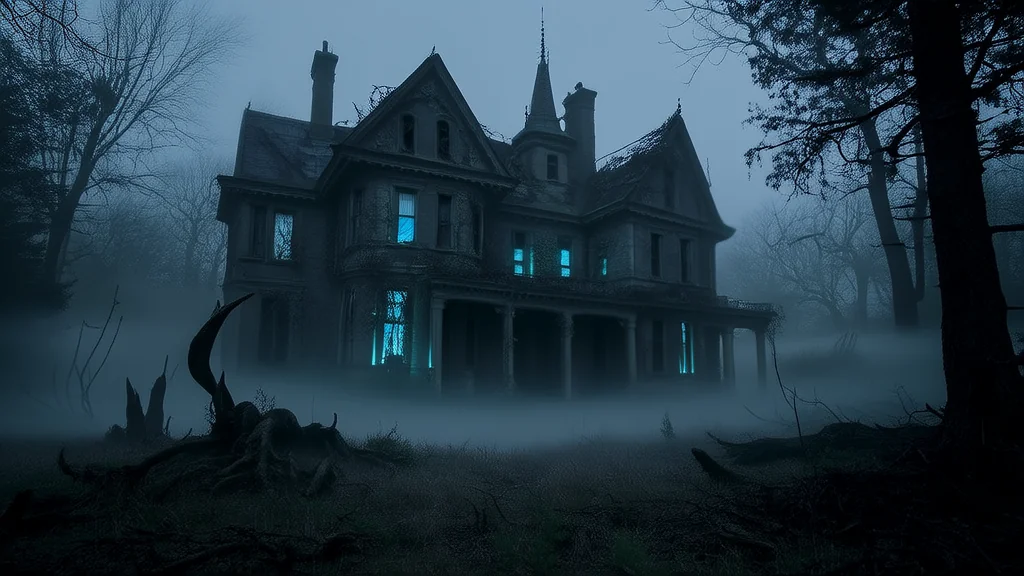🔮 Weird Tales & Urban Legends
The Whispering Walls of Eldergrove's Forgotten Mansion

In the quiet town of Eldergrove, there stood an old mansion at the edge of the woods that no one dared to approach. It had been abandoned for over a century, its windows shattered, its roof sagging like a dying man’s breath. Locals called it "The Hollow House," though few could say why. Some claimed it was cursed; others whispered that it had once belonged to a reclusive inventor who vanished without a trace.
The house was never truly empty. At night, when the wind howled through the trees, strange sounds echoed from within—soft murmurs, the creak of floorboards, and the faint sound of a clock ticking in a place where time had long since stopped. Children were warned not to play near the property, but curiosity often overpowered fear. One autumn evening, a group of teenagers, fueled by bravado and a shared bottle of cheap whiskey, decided to explore the place.
They found the front gate rusted shut, but after some effort, they managed to push it open with a groan that seemed almost alive. The air grew colder as they stepped inside, their breath visible in the dim light. The hallway was lined with portraits, each one depicting a different face, all staring blankly ahead as if waiting for something—or someone—to return.
Inside the parlor, they found a grand piano, its keys yellowed and cracked. One of the boys, curious and slightly drunk, sat down and pressed a key. The note rang out, clear and resonant, then another, and another. The melody that followed was haunting, a tune neither of them recognized, yet it felt oddly familiar, as if it had been played before.
As they wandered deeper into the house, they noticed things that didn’t make sense. A door opened into a room that wasn’t there before. A mirror reflected a figure that wasn’t theirs. The walls seemed to shift subtly, as if the house itself was breathing. They began to feel watched, not by eyes, but by something more elusive—an awareness that lingered just beyond the edge of perception.
In the study, they found a journal, its pages filled with hurried, frantic handwriting. It belonged to a man named Elias Varn, the supposed inventor who had disappeared. He wrote about his experiments with time, about a machine he built in the basement, and about the day he heard a voice calling him from the other side. “It doesn’t want me to leave,” he had written. “But I must. I have to go back.”
At that moment, the lights flickered, and the temperature dropped suddenly. The teenagers froze. From the shadows, a low hum began, vibrating through the floor. It wasn’t loud, but it was there, constant, like the heartbeat of the house itself. One of them stumbled backward, knocking over a small table. A glass vase shattered, and the sound echoed through the halls like a scream.
They ran, not looking back, until they reached the gate. When they turned to look, the house was gone. Not destroyed, not hidden, but simply… not there. The trees stood tall, the ground was undisturbed, and the sky was clear. Only the memory of the place remained, a ghost of something that had once been real.
The next morning, the town buzzed with rumors. Some said the kids had gone mad. Others claimed they had seen the house disappear. But the most chilling theory came from an old woman who lived on the edge of town. She told them that the house wasn’t meant to be found—it was a threshold, a place between worlds. And those who entered might never find their way back.
Years later, the house still stands, though no one dares to approach it. Some say it appears only under certain conditions: when the moon is full, when the wind is just right, or when someone is searching for something they can’t quite remember. It waits, silent and patient, as if it knows that one day, someone will come again. And this time, they may not leave.
发布于 en
🔗
相关站点
- AI Blog — AI 趋势与技术新闻